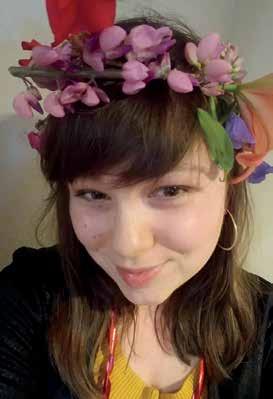wellness
Saving Face: Getting Help for Teenage Acne By Malia Jacobson
T
eenage acne is a common affliction — it affects up to 85 percent of adolescents, most often starting when kids are in middle school and sometimes continuing for decades. But if your teen is feeling more stressed about skin problems these days, they’re not alone. With more schooling, dating and socializing taking place via video chat, teens are often finding themselves in front of the camera without the benefit of flattering, blemish-removing social media photo filters, and they may not love what they see, notes Jacqueline Panko, M.D., a dermatologist with The Polyclinic in Seattle. “Acne has been around for a long time, and it’s a concern for most teenagers at some point,” says Panko. “But with teens spending even more time on video, they may be more sensitive to how they’re showing up on camera right now.”
THE BEST of
KIDS’ RESALE
HOW IT WORKS
Lay your gently used kids’ stuff in a bin
Browse the store while we appraise your items
Choose your payout Cash or 20% more in store credit
12928 SE KENT KANGLEY ROAD in KENT | 253-236-4269 10 • August 2020 • parentmap.com
More than a cosmetic concern Research shows that acne is far from a harmless hallmark of adolescence. Even after pimples heal, they can leave behind telltale scars and hyperpigmentation, or dark spots on the skin. According to a 2017 review of published research, acne Trendy treatments leaves physical scars up to 90 percent such as probiotic of the time. washes, handheld Acne also impacts teens’ mental high-frequency health, according to a number of wands and light studies. One study found that about therapies haven’t two-thirds of teenagers with acne been proven to work. reported that the condition had a moderate to severe negative impact on their mental well-being, interpersonal relationships and daily activities, including schoolwork and sports. Ongoing acne can lead to the development of problems involving body image, sexuality and socialization, according to research. “We consider acne much more than a cosmetic concern,” says Panko. “The teenage years are a powerful time in someone’s life and development. Being able to face the world with clear skin can allow teenagers more confidence, so they can dream bigger and show up in the world more confidently.” How a dermatologist can help Teens who are bothered by pimples for more than a few months should consider seeing a dermatologist, says Panko. Acne is highly treatable, and treating it early may help prevent scarring and hyperpigmentation in the future. A teen’s first visit to a dermatologist generally includes a comprehensive medical history (both personal and family) along with questions about which skin care products they’ve tried. “We’ll talk about what has worked and hasn’t worked in terms of treatments, then tailor a treatment plan to that patient’s specific needs,” says Panko. “Treatments may depend on whether a patient plays sports, where on the body the acne is, whether their skin is sensitive, and any other medications they may be taking.” Treatment plans usually include a mix of topical creams or gels, oral antibiotics and possibly hormonal therapies such as birth control pills, says Panko. “We also talk to families about diet and sun exposure. Some UV light appears to help clear up









